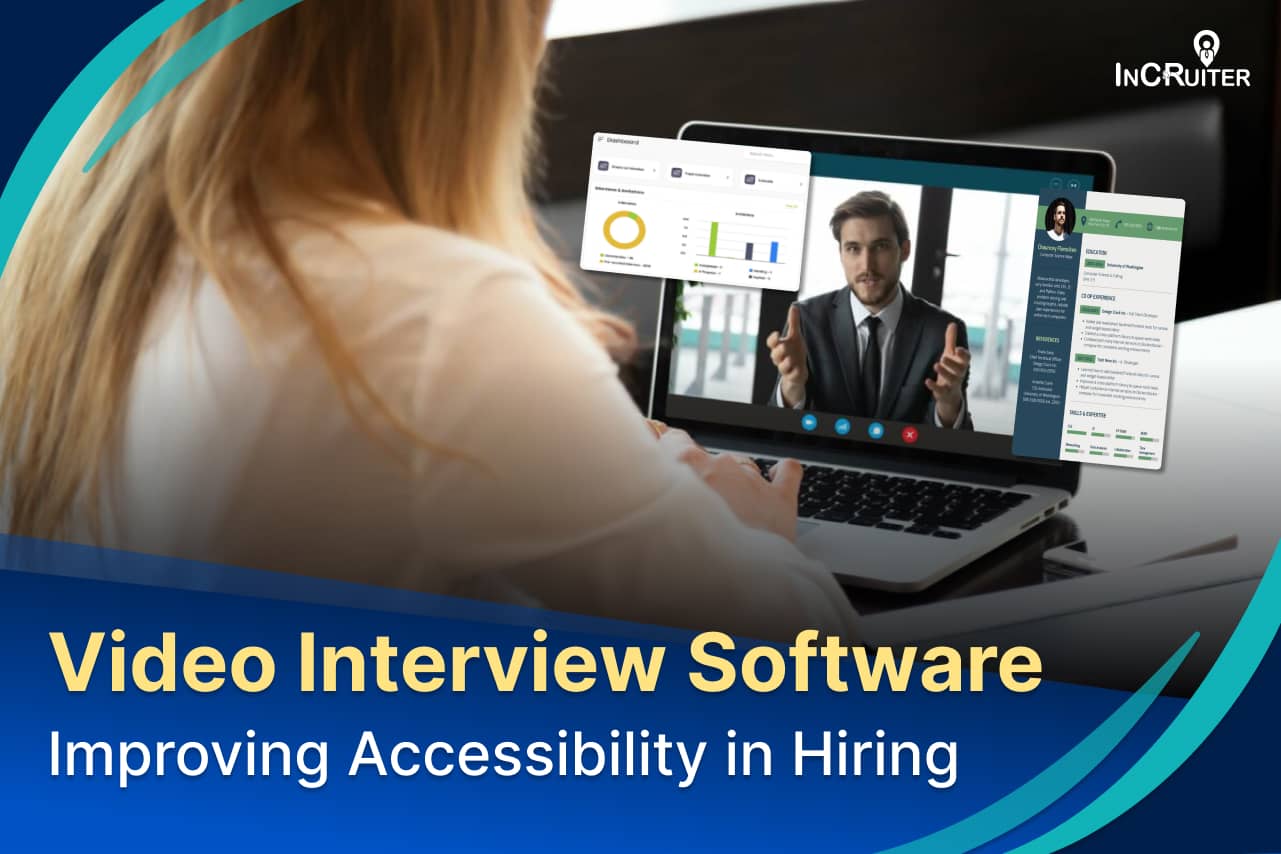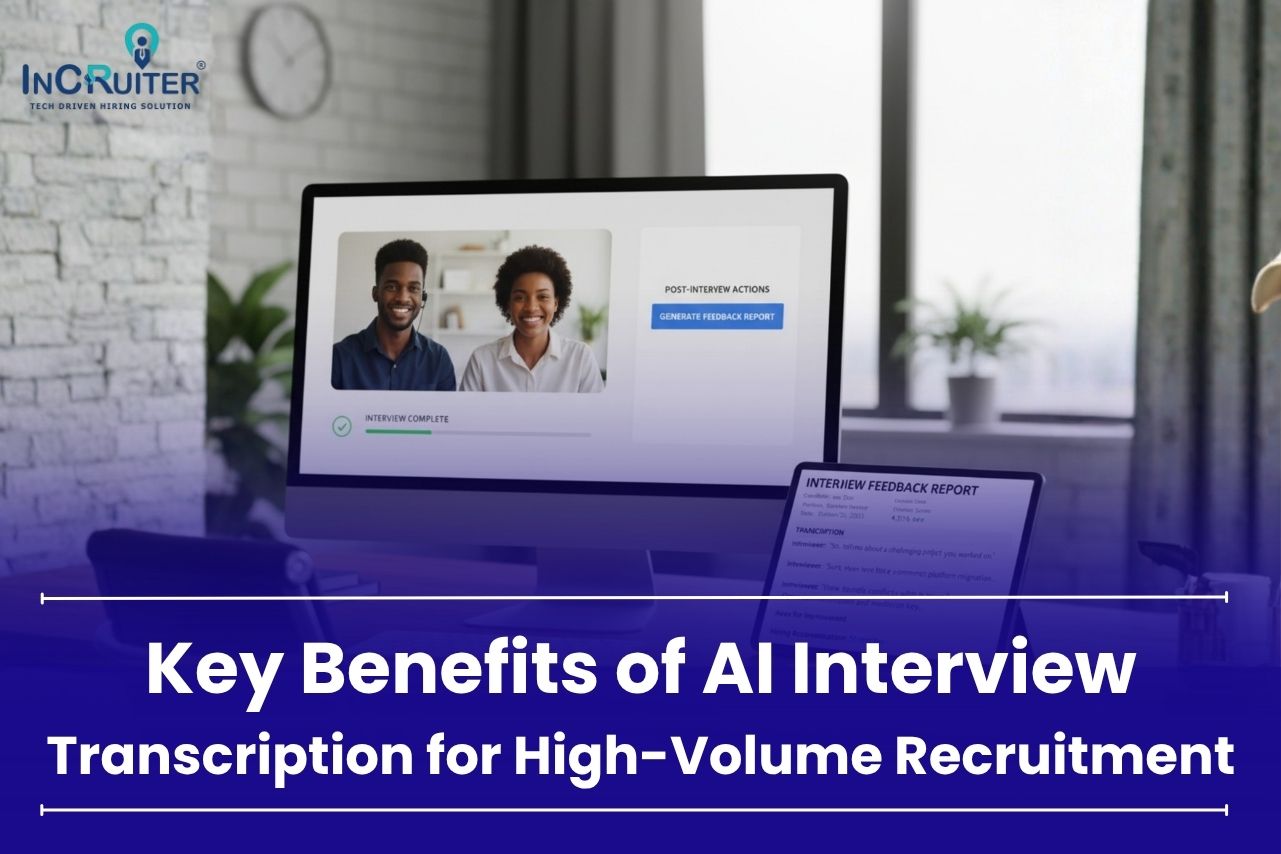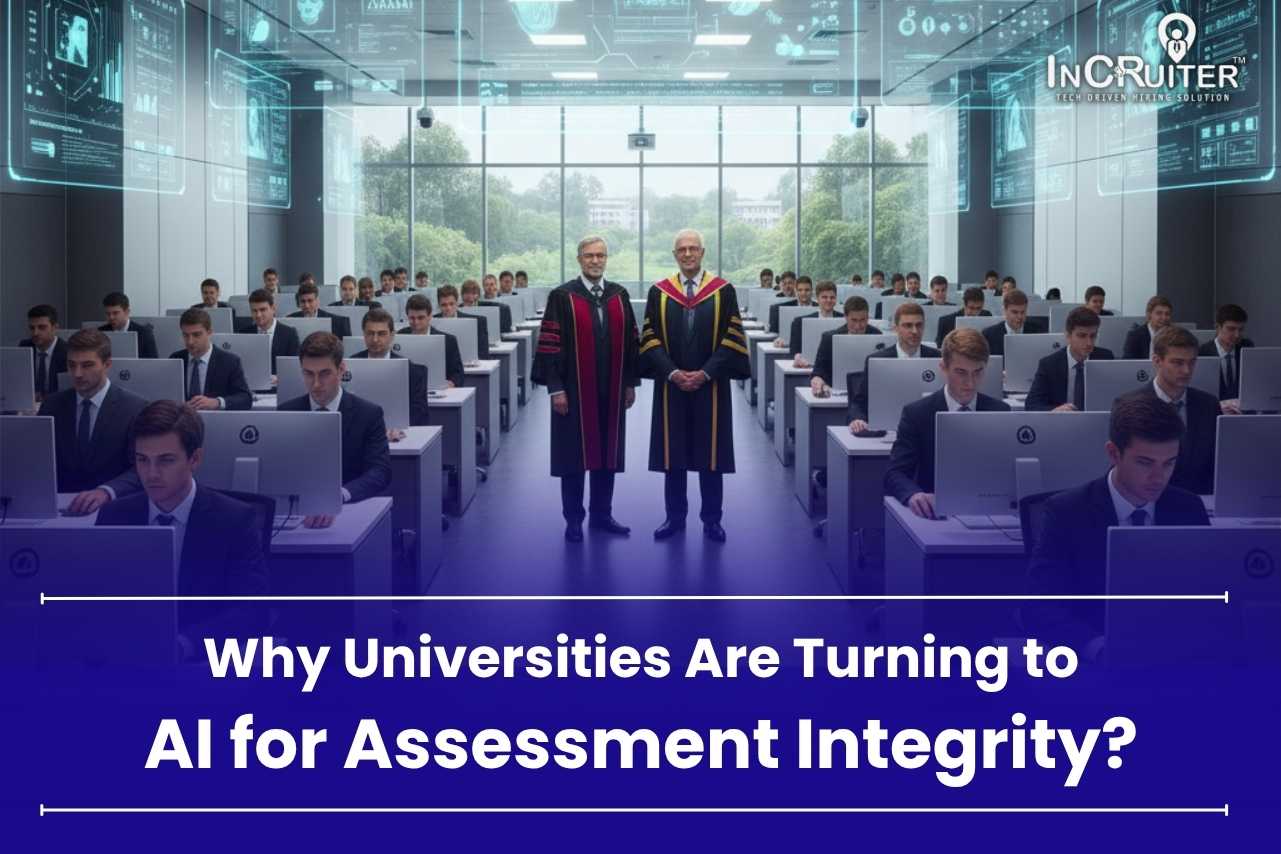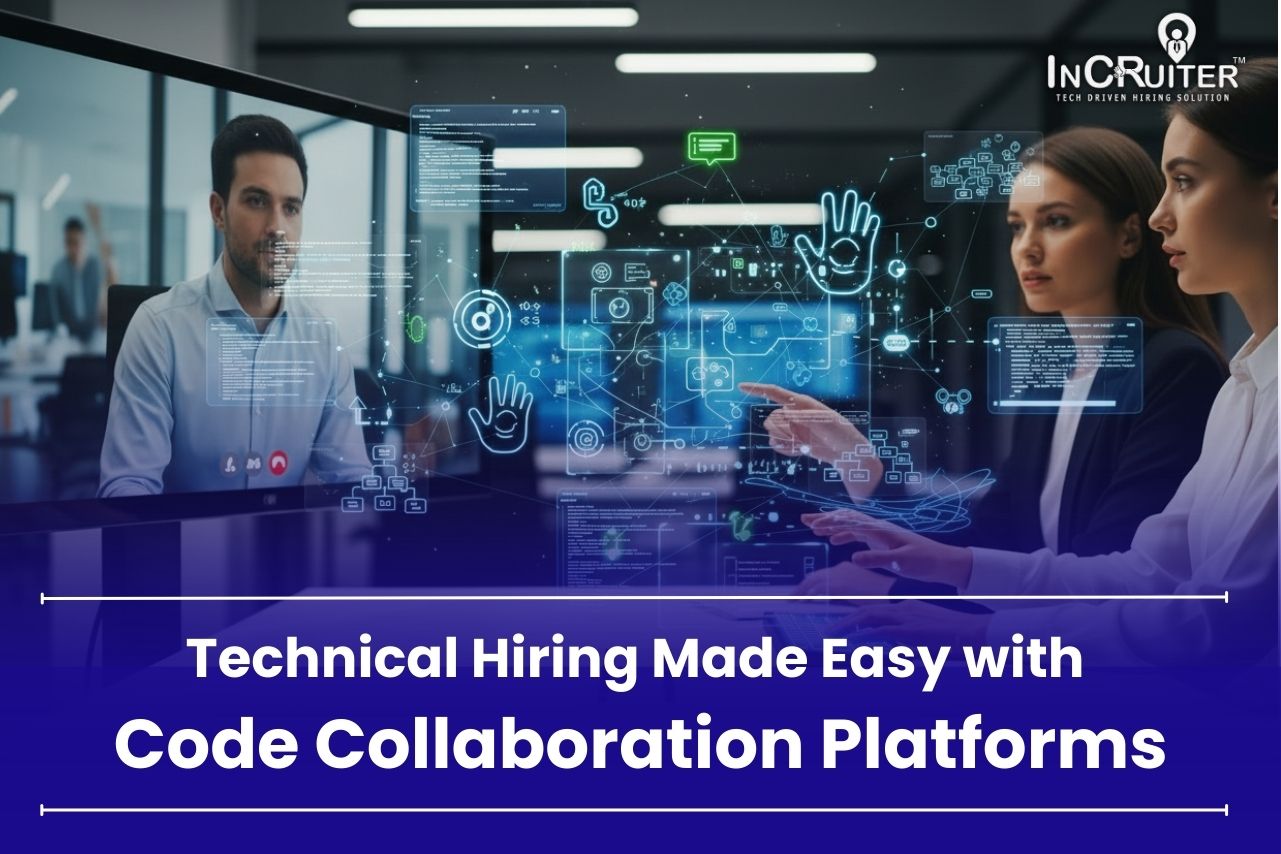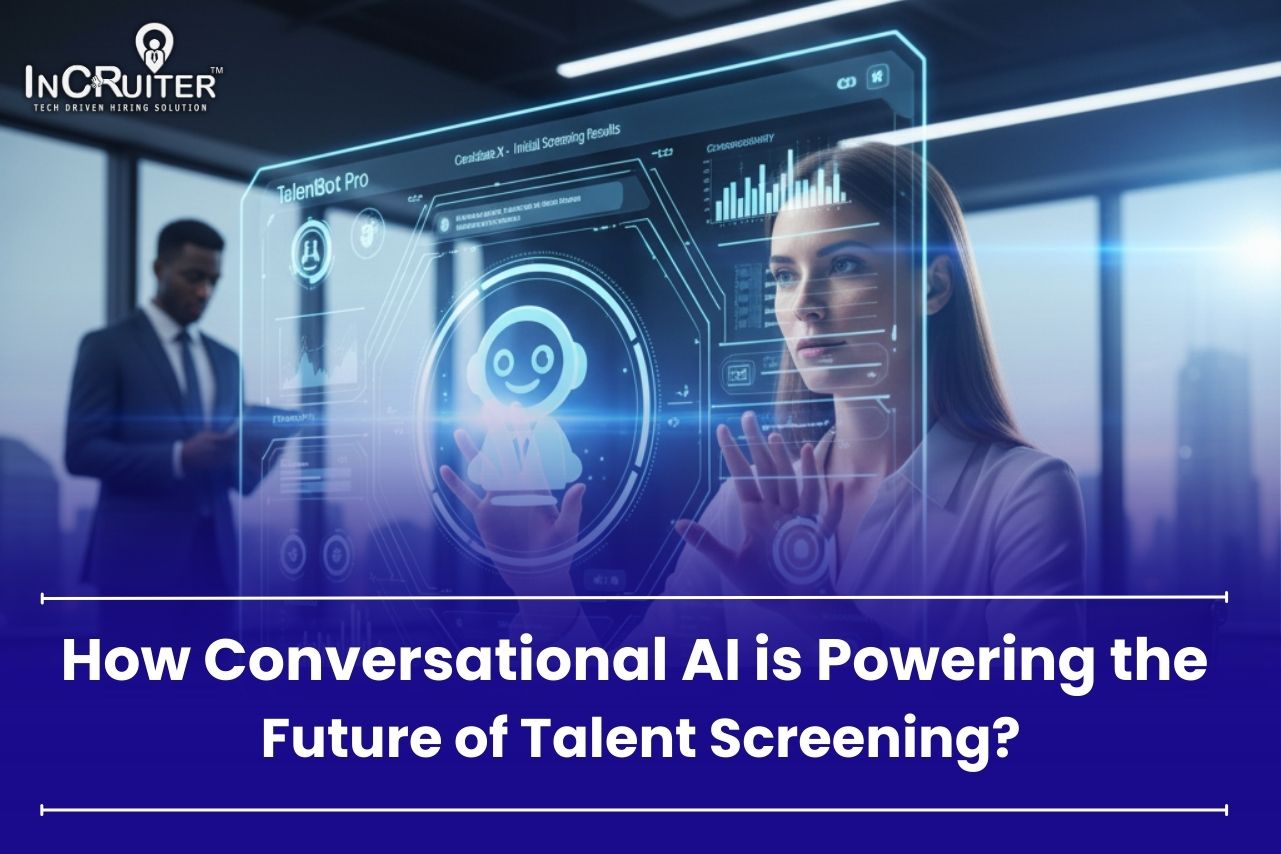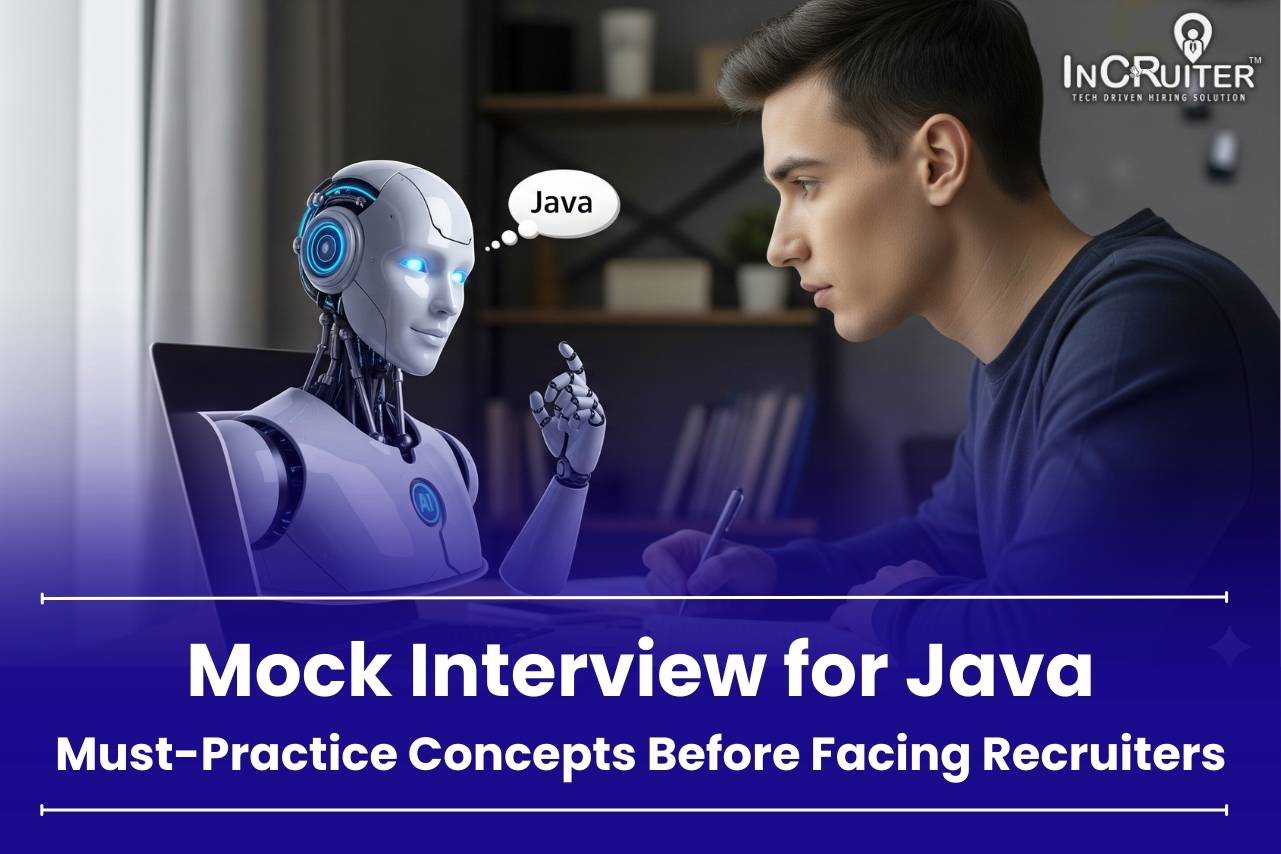In today’s competitive employment market, hiring process accessibility is more crucial than ever. Services that are genuinely accessible ensure that every candidate, regardless of their physical location or unique ability, has equal opportunities and serves a strategic benefit. Inclusive hiring policies have become critical as remote employment keeps increasing.
The best video interview software provides more than just convenience. It gives candidates a sense of control over their application process and helps companies draw a large, more varied workforce by removing obstacles. Features like closed captioning, flexible scheduling, voice recognition, language support, and customizable user interface are a boon in hiring tech. Everyone has a fair chance of discovering an inclusive and readily available employment procedure with video interviewing tools.
We will explore more about the features of this innovative program here on this blog. Let us so get right on!
Importance of Accessibility in Recruiting
An inclusive and accessible hiring procedure changes everything. Companies can find a more extensive and varied talent pool using more readily available approaches. According to a poll by PwC, 86% of job searchers prioritise workplace inclusiveness.
When travel limitations or vital deadlines apply, in-person interviews might be difficult. Accessibility ensures every candidate has equal chances to apply for and secure a job. Particularly for persons with impairments or those residing in far-off locations, traditional employment methods often cause obstacles.
Also Read: Recruiter’s Guide to Video Interviewing Software
What is Video Interview Software?
Video interview software is a platform that streamlines remote interviews and allows applicants to connect globally with excellent global accessibility features. The best video interview software transcends simple video conferences.
A poll indicates that the worldwide market for interviewing tools will likely explode and reach an astonishing US $536.85 million by 2028! The best video interview software bonded with tools like—Close captioning and live transcripts, assistive technology integration, translation services, and flexible scheduling is helping to catch up with such increasing polls. One particularly notable company in this field is InCruiter, which is meant to streamline hiring and link companies with a larger, more varied pool of candidates through remote interviews.
Also Read: The Role of Video Interview Software in Modern Recruitment
Improving Accessibility With Video Interview Tools
Here is an outline of some principal qualities of how first-rate video interview software is improving accessibility:
- The closed captioning guarantees that candidates who are deaf or hard of hearing will participate in the interviews without obstruction.
- Candidates can select suitable times, allowing various time zones and personal schedules.
- For candidates with disabilities, assistive technology compatibility helps to make the interview process far more approachable.
We will discuss these exemplary facets that satisfy everybody’s needs and necessities in the job market.
Key Accessibility Features of Video Interview Software
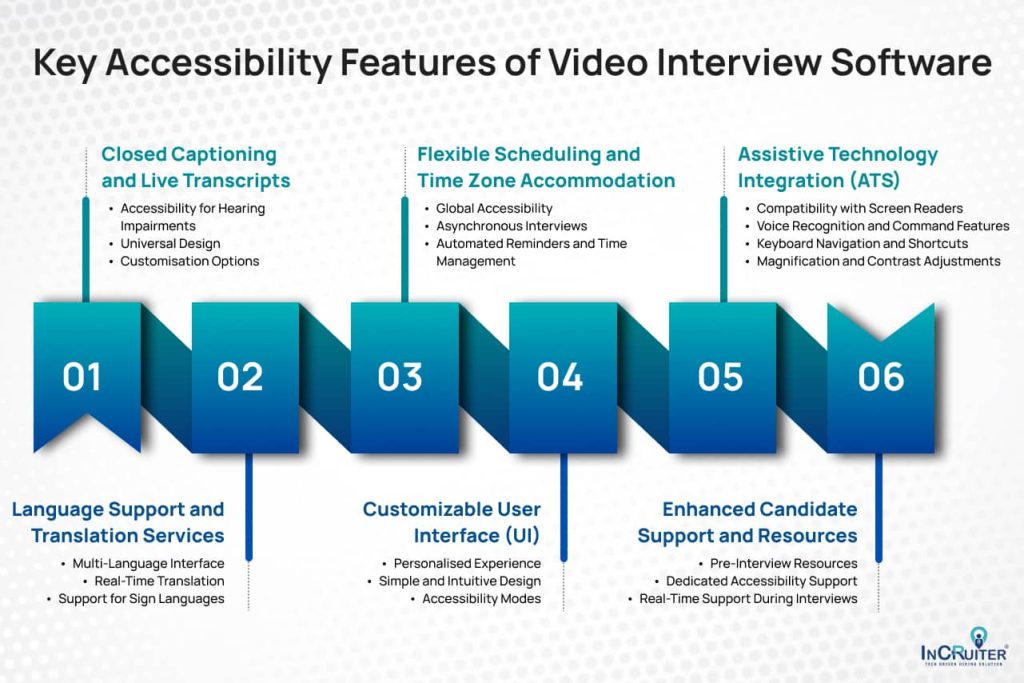
Let’s discuss in detail how video interview tools overcome conventional obstacles and increase the inclusivity of the hiring process.
Closed Captioning and Live Transcripts
- Accessibility for Hearing Impairments: Closed captioning provides real-time text for spoken words during the interview, making it accessible to candidates who are deaf or hard of hearing. Live transcripts offer a written conversation record that can be reviewed during or after the interview.
- Universal Design: Beyond candidates with hearing impairments, closed captioning and transcripts can benefit non-native speakers, individuals with auditory processing disorders, and those in noisy environments.
- Customization Options: Some platforms allow candidates to customize caption settings, such as font size, color, and background contrast, improving readability.
Flexible Scheduling and Time Zone Accommodation
- Global Accessibility: Video interview tools make it possible for people from different zones of the world to join interviews with ease. The option to schedule interview times across various time zones helps companies bring in talent from different countries. This feature is a big help for businesses wanting to build diverse and global team.
- Asynchronous Interviews: Some platforms also provide one-way interviews, which allow candidates to answer questions at their convenience. Instead of live sessions, they can record their answers whenever they find time. This option is ideal for those with busy schedules or who live in areas far from the company’s location.
- Automated Reminders and Time Management: The software often sends out reminders about upcoming interviews. This feature is helpful for people who might forget or feel stressed about keeping track of their interview schedules. It keeps everything on track, ensuring that everyone involved stays on time without any trouble.
Assistive Technology Integration
- Compatibility with Screen Readers: Video interview platforms can work with screen readers, tools that turn written words and images into sound or braille. This makes the interview process more approachable for people who are visually impaired.
- Voice Recognition and Command Features: Some software allows people to use their voice to give commands. This means they can answer questions or move through the platform without touching anything. It’s especially helpful for those who have motor disabilities, as using a keyboard or mouse might be difficult for them.
- Keyboard Navigation and Shortcuts: For those who need to rely on a keyboard, some platforms allow full keyboard control, letting users move through the software smoothly without needing a mouse. Custom shortcuts can make this process even easier for people with movement challenges.
- Magnification and Contrast Adjustments: The ability to change screen size and contrast is another key feature. It helps those with limited vision or color blindness by making the screen easier to read.
Customizable User Interface (UI)
- Personalized Experience: Many platforms let users tweak the interface to their liking, from changing colors to adjusting text size. This personalization adds comfort, helping candidates feel at ease and less overwhelmed during interviews.
- Simple and Intuitive Design: An easy-to-use interface with clear instructions is crucial. Everyone, especially those who may struggle with tech or have cognitive challenges, benefits from straightforward navigation.
- Accessibility Modes: Some software comes with special modes that adapt the interface for people with disabilities. These might include simpler layouts for cognitive issues or different input methods for those with mobility concerns.
Enhanced Candidate Support and Resources
- Pre-Interview Resources: Many platforms provide helpful resources like video tutorials, practice sessions, and common FAQs. These resources help candidates get used to the software and feel less nervous before the interview.
- Dedicated Accessibility Support: Some platforms have teams focused on helping people with disabilities. These teams make sure everyone can use the software without problems.
- Real-Time Support During Interviews: Live chat or phone help can quickly solve any issues that come up. This way, technical problems don’t affect how candidates perform.
Benefits of Video Interview Software for Employers and Candidates
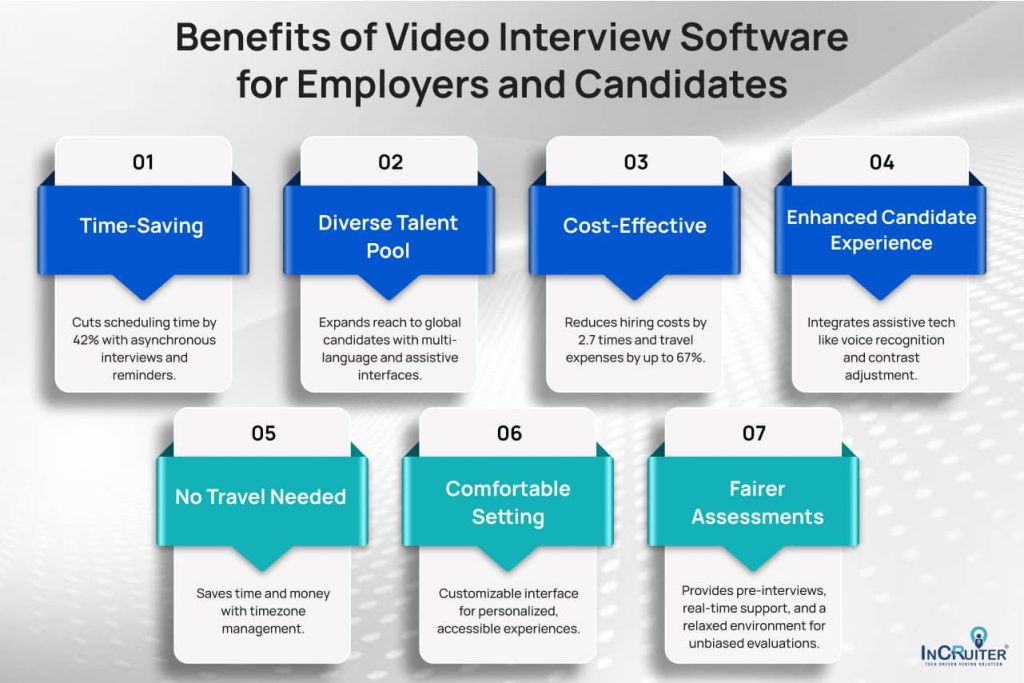
Now, Let’s explore why candidates and companies find video interview tools so revolutionary.
- Time-Saving: Scheduling interviews takes up 42% of recruiters’ time. Video interviews reduce this significantly through asynchronous interviews and automated reminders.
- Diverse Talent Pool: About 84% of companies report varied applicant pools as video interviews reach candidates worldwide through global accessibility. The software specialises in multi-language, translation, and sign-language interfaces for challenges like language barriers or visual and auditory impairment.
- Cost-Effective: Companies save 2.7 times on hiring expenses by utilising all-in-one inclusive features. Travel costs of up to 67% can be cut through video interview software.
- Better Candidate Experience: Video interview software offers assistive technology integration, which provides screen compatibility, voice recognition, keyboard navigation, and contrast adjustment to the user.
- No Travel Required: Candidates save time and money as video interview software is more accessible and equipped with time zone accommodation and management.
- Comfortable Setting: A fully customisable user interface lets the candidate and company personalise the experience. The simple and intuitive design with various accessibility modes meets the needs of each individual.
- Fairer Assessments: Enhanced candidate support and resources like pre-interviews, real-time support during interviews, and a relaxed setting allow for a more equitable evaluation. 62% of candidates prefer automated scheduling over back-and-forth emails.
Key Challenges and Considerations
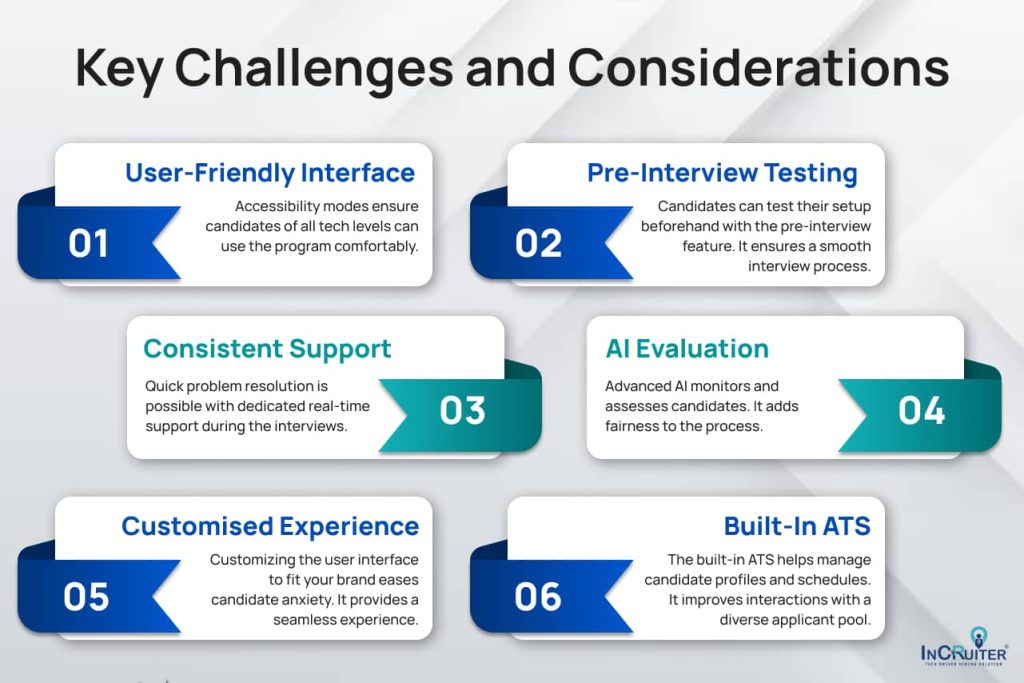
Although video interviewing tools have many advantages, one needs to take some careful consideration. Technical challenges include connectivity calls for thorough support and pre-interview testing. Selecting software with solid data security and open privacy policies will help to ease privacy issues.
With a platform like IncVid, here’s what to search for to transform your recruiting process:
- User-Friendly Interface: Accessibility modes ensure candidates of all tech levels can use the program comfortably.
- Pre-Interview Testing: Candidates can test their setup beforehand with the pre-interview feature. It ensures a smooth interview process.
- Consistent Support: Quick problem resolution is possible with dedicated real-time support during the interviews.
- AI Evaluation: Advanced AI monitors and assesses candidates. It adds fairness to the process.
- Customised Experience: Customising the user interface to fit your brand eases candidate anxiety. It provides a seamless experience.
- Built-In ATS: The built-in ATS helps manage candidate profiles and schedules. It improves interactions with a diverse applicant pool.
The Future of Accessibility and Video Interview Software
If we look at the big picture, video interview applications have a bright and almost limitless future:
- AI-Driven Solutions: AI will make one- and two-way interviews seamless. Efficiency will improve with automated features.
- One-Way Interviews: Candidates can answer pre-recorded questions at their convenience. Automated screening and real-time feedback make the process faster and more objective.
- Two-Way Interviews: Live interviews offer real-time comments, automated scheduling, and live code compiling. The experience is customised and optimised.
- Remote Hiring: High-quality video and sound make remote hiring easier. It saves time and gives access to a diverse talent pool.
- Fair and Safe Interviews: Live code compilation, integrated proctoring, and real-time feedback ensure interviews are fair and secure.
Wrapping Up
Regardless of geographical location, video interview software like IncVid lets companies interact with a worldwide pool of expertise. These solutions improve the candidate experience and help to simplify hiring by streamlining the recruiting process. Real-time feedback and live code compiling help guarantee that the assessment is fair and efficient, increasing candidate satisfaction. Using video interviewing tools such as IncVid can help businesses ensure they are not just filling roles but also doing so inclusively and efficiently. Therefore, give video interview tools some thought if you want to improve your hiring procedure and access a larger, more varied talent pool. Visit InCruiter for other ideas and to investigate the most incredible tool.
Also Read: Video Interviewing: Cost-Effective Hiring Solutions for Startups






